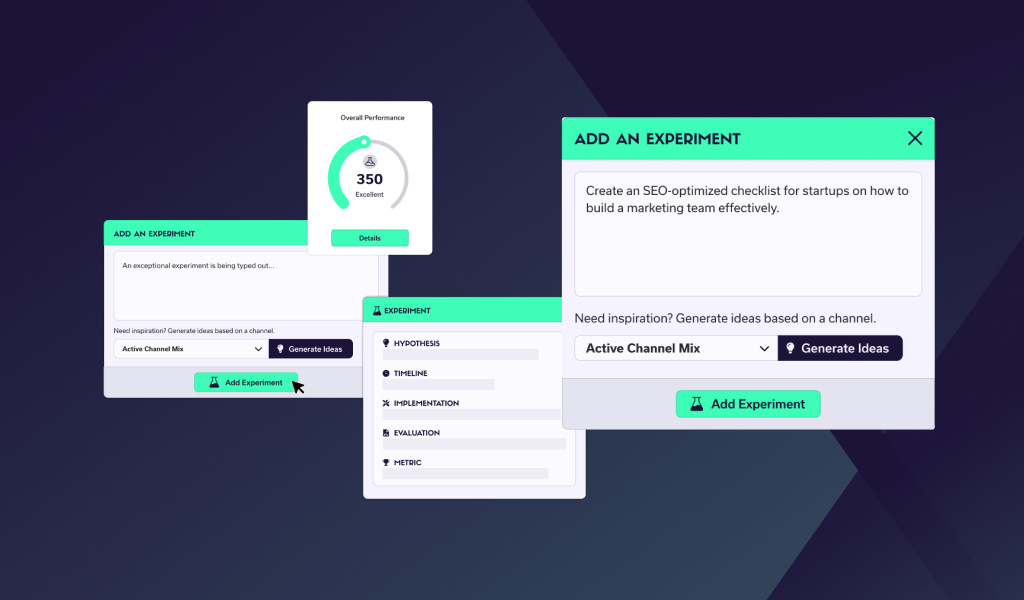It seems that every year we growth marketers claim our industry has changed forever. Well, we’re not just repeating ourselves - it tends to be true. The world of marketing can move incredibly quickly and sometimes it feels like, as marketing professionals, we have to run to stand still.
New tools, integrations, platforms, trends and ideas pop up all the time. Sorting the wheat from the chaff can be a nightmare.
In this article we’re going to cover some mind blowing martech stats, and what they mean for marketers, to illustrate the point. Let’s dive right in.
- $344.5bn - the value of the martech industry worldwide as of 2021. That’s a jaw dropping figure. And the reason for it is martech is driving huge value for businesses in terms of marketing performance, efficiency and measurability. We’ve written a bit about what a martech stack is here, and given some examples of how they add value to businesses. Source.
- 83%. The percentage of marketers who have replaced or upgraded a part of their martech stack in the past 12 months according to Wildfire. People aren’t just settling for ‘okay’ stacks. They are constantly trying to find ways to improve their martech toolkit. Source.
- 9,500. The number of martech solutions available worldwide according to Statista, up from 150 in 2011. That’s despite a LOT of acquisitions recently. We’ve written a blog about how to choose the right tools to build the best martech stack for your business.
- 26.6%. The proportion of global marketing spend directed towards martech. More than a quarter of the budget - that’s broadly the same amount that goes towards paid media or agency costs. It’s an important piece of the pie. Source.
- $25.1bn. The expected increase in the value of the marketing automation sector by 2023. Source.
- 36%. The percentage of marketers who are looking to reduce the number of martech tools they’re using. So while the sector as a whole grows, a sizeable majority are still wary of their stacks becoming too ‘bloated’. Source.
- 26%. The amount Facebook’s stock dropped in one day in Feb 2022. There were lots of factors to this, but a big part of it was the impact of 2021’s IOS update on the efficacy of Facebook’s ad platform. Targeting and tracking within Facebook are not as effective or efficient anymore, so a lot of marketers are looking elsewhere with their ads spend.
- $6.3bn. The expected spend on data and analytics tools by the marketing profession in 2022. That’s up from $3.4bn in 2017. We really want to know what our marketing spend is doing. Source.
- 186%. The growth in the number of marketers who said they used AI from 2018 to 2021. That’s a massive increase - AI could be transformative for our industry. Source.
- 61%. The amount of martech stack functionality marketers think they use out of their toolkits. From what we’ve seen in the industry, we’d wager it’s actually a lot lower. People often don’t get the most out of their tools. Source.
- 44%. The proportion of marketing professionals who say they use 5 or more tools in their martech stack. Source.
- 3 in 5. The proportion of brands who say they are not ready for the phase out of cookie based tracking. Source.
- 72% of consumers are worried that apps are tracking their movements. In a post pixel world, where consumers are increasingly wary of advertising tracking, marketing professionals will need to find ways to adapt. Source.
- 15-20%. Data-centred marketers get a 15-20% better return on their marketing investment than their peers. Source.
- 78%. The proportion of Gartner Marketing Technology survey respondents who said analytics is one of the top three most important tools in their arsenal. Again, we marketers really like to know what our money is doing. Source.
- 53%. The percentage of marketing data specialists who use SQL to run queries. The ability to get answers quickly by running SQL queries is becoming increasingly important within the marketing team. Source.
- 24%. Just 24% of marketers believe their martech stacks act as effective strategic enablers in their business. This suggests to us that they are not getting the most out of the tools they have paid for and set up. Source.
- 10+ hours. The average time per week a marketing technologist spends using a marketing automation platform. It strikes us - if it’s set up correctly, and automated, why does it need 10 hours per week to manage? Source.
- $30.7bn. The size of the augmented reality, virtual reality and mixed reality markets in 2021. Some people are predicting that this will increase 10x in the next few years. Martech solutions to help marketing professionals tap into this effectively will become more and more common. Source.
- 35%. The percentage of marketers who used AR, VR or MR in their marketing strategies in 2021. We expect this will increase dramatically in 2022.
- 760% (!!) The increase in revenue reported by email marketers who use proper audience segmentation. If you’ve not got your CRM and email automation tools properly set up and managed, perhaps this stat will persuade you. Source.
There you have it, our 21 top martech stacks to show that marketing is changing. It’s a lot to digest. Using martech tools effectively, and integrating them into a stack which helps rather than hinders your business, is a great way to ensure your marketing is effective, efficient and measurable.
Talk to a Growth Advisor
We create a clear, focused marketing strategy by combining our expertise with your knowledge of your business.
Trusted by over 130 startups because our unique growth process and team of marketing experts unlock exponential growth











